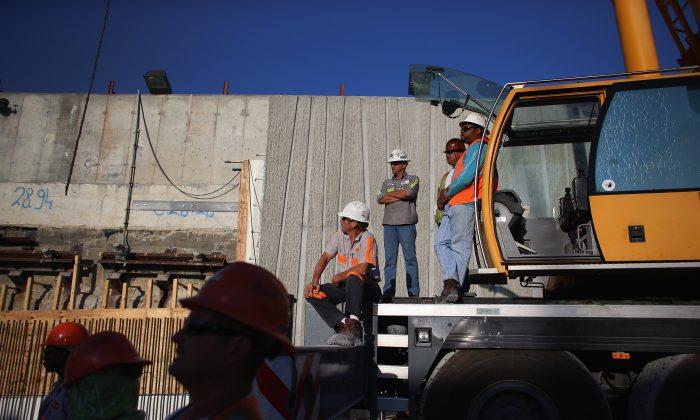The Labor Department announced the economy created 165,000 jobs in April, and the unemployment rate slipped a notch to 7.5 percent. That’s better than March but hardly enough—getting unemployment down to 6 percent over the next three years would require 365,000 jobs a month, and that is not likely to happen.
Adding in discouraged adults and part-time workers who want full-time jobs, the unemployment rate becomes 13.9 percent. Meanwhile, hundreds of thousands of young college graduates face years working at Starbucks and may never get on the ladder to a meaningful career.
Slow growth is the big culprit: Forty-five months into the economic recovery, growth has averaged a subpar 2.1 percent. Growth closer to 3 percent is needed to pull down unemployment without chasing adults out of the workforce and sentencing well-educated young people to low-skilled employment, but the president and Congress are taking the country in the wrong direction.
Defense cutbacks negotiated with Congress during President Obama’s first term have sliced some $62 billion from federal spending since last fall. Tax increases enacted in January and sequestration triggered in March will further reduce household purchasing power and government spending by another $200 billion in the second and third quarters of this year. Together, those policies will kill about 4 million jobs over the next three years.
With southern Europe’s depression spreading to Germany and other northern states, the prospects for U.S. exports and cut-priced competition from Europe in U.S. markets is heating up—growth and jobs creation could stay depressed for a long time.
A bounty of inexpensive natural gas, rising wages in China, and dysfunctional government policies in Europe and Japan makes the United States a more attractive location for manufacturing. However, new factories will require very few workers—engineers have applied the wizardry of handheld devices to factory automation with amazing results.
It is hard to imagine the Federal Reserve could do more to support growth. Already, it is buying virtually all the new mortgage back securities and 70 percent of the new federal debt issued each month. This is keeping interest rates at record lows and boosting new home construction; however, it penalizes the elderly who rely on CDs (certificates of deposit) and fixed-income investments and reduces their spending on goods and services. Many cash strapped elderly have returned to work, often taking jobs from younger workers.
Stronger growth would help and is possible. Forty-five months into the Reagan recovery, GDP was advancing at a 5.2 percent annual pace—nowadays that pace would bring unemployment down pretty quickly.
More rapid growth requires importing less and exporting more—dealing with the $450 billion trade deficit on oil, by drilling more offshore and in Alaska, and with China, by addressing its undervalued currency and protectionism.
Faster growth also requires right sizing business regulations to make investing in new jobs less expensive and time consuming. Regulatory enforcement is needed to protect the environment, consumers, and financial stability but must be delivered cost effectively and quickly to add genuine value.
Overall, more jobs require trimming back on tax increases and spending cuts, and more pro-growth trade, energy and regulatory policies.
Peter Morici is an economist and professor at the Smith School of Business, University of Maryland, and widely published columnist.





Friends Read Free